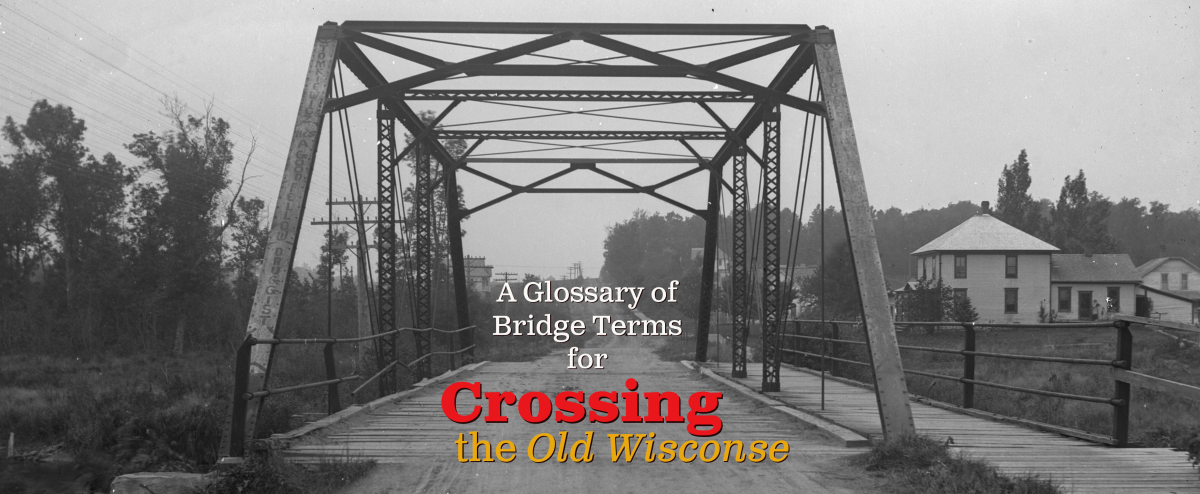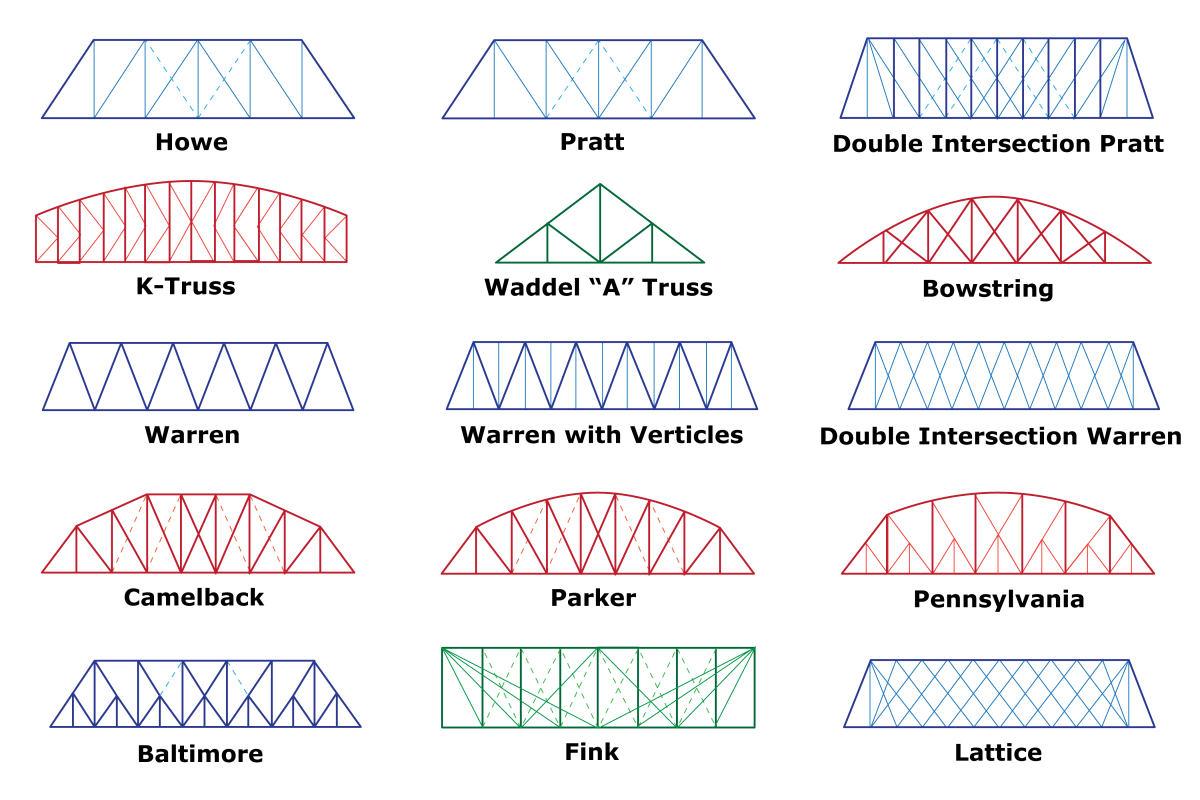Glossary of Bridge Terms

Useful Bridge Terminology
Bridge building is a highly specialized field, and like any such field it has its fair share of unique terminology. If you come across a bridge-related term that you don't know, take a look at this handy glossary of bridge terms.
Glossary
Abutment- The structure at either end of a bridge that connects a bridge's deck to the ground, provides lateral support for bridge approaches, and prevents stream scouring. Single span bridges are supported by abutments alone while multispan bridges feature piers supporting those intermediate spans not supported by abutments.
Arch- A curved symetrical structure spanning an elevated space and typically supporting a weight above it.
Arch Ring- The loadbearing curved part of an arched structure.
Approach- The part of a bridge that carries traffic from land to the main part of the bridge. OR The span connecting the abutments to the main span or spans of a bridge.
Brace- A member that supports or fixes another member in position.
Camelback Truss- A truss bridge with a polygonal upper chord differing from a Parker truss in that it has exactly five slopes.
Cantilever- A member projecting horizontally from a supporting beam or wall.
Chord- The long, usually straight, members that make up the top and bottom-most sections of the bridge superstructure. The top and bottom chords of a truss bridge are connected by a web of vertical and diagonal members which are attached to the chords at panel points.
Deck Girder- One of the main girders of a bridge deck.
Deck Truss- A truss bridge in which the road deck is supported on the top chord of the bridge and runs above the superstructure.
Draw- A movable portion or span of a bridge.
Girder- The main horizontal structural member (or beam) of a bridge to which all smaller beams are connected.
Lattice Truss- A truss bridge that uses small interlaced diagonal elements in the form of a lattice.
Panel Point- The point at which two truss members intersect on the same chord.
Parker Truss- A truss bridge with a polygonal upper chord.
Pier- A structure that transmits loads from a bridge's superstructure to the foundation or ground. Distinct from an abutment in that they are not locate at the extreme ends of a bridge and do not provide lateral support.
Piling- A support pole or post driven into soft soil until it reaches a layer of compacted soil or rock.
Pony Truss- A low truss without any overhead bracing members. Schofield’s Eau Claire River Bridge is a good example of this type.
Pratt Truss- Designed in 1884 by Thomas and Caleb Pratt. This style of bridge is easily identified by a simple web arrangement consisting of vertical members interspersed with diagonals that slope downwards towards the center. The railroad portion of the Knowlton Twin Bridge is a good example of this type.
Scour- The action of current removing sand and silt from around bridge abutments and piers. Can be detrimental to a bridge's structural integrity
Skewed Bridge- A Bridge built obliquely from bank to bank.
Span- The longitudinal distance between two adjacent bridge supports
Through Girder- A Bridge composed of a pair of longitudinal girders connected at the bottom chord by transverse floor beams which support the road deck. Traffic passes between, or through, the two girders giving rise to the name.
Truss- A load-bearing structure consisting of a series of interconnected triangular units.
Truss Bridge- A Bridge whose load-bearing structure consists of a truss. This style of bridge was popular from the late 1700s through the mid-1900s.
Truss Panel- A portion of a truss between two adjacent panel points on the same chord.
Uncoursed Masonry- Masonry (usually natural stone) laid without regard to even layers or "courses."
Voussoir- A stone or block in the shape of a truncated wedge making up part of an arch ring.
A Note on Truss Bridges in particular
Bridges come in many forms, from simple hewn logs laid across tiny streams to grand suspension bridges spanning miles of open water, the design possibilities are seemingly endless. While engineers are constantly experimenting with new designs in search of reliability and economy, occasionally favorites emerge. Begining in the late 1700s the truss bridge became the favored form for many bridge building applications. The truss bridge enjoyed long popularity in the United States, remaining in vogue until at least the 1930s when concrete and steel girder bridges began to take over. Due to the long-lived popularity of truss bridges many variants emerged. a few of which can be seen below.
With most of Marathon County's historic bridges having been built between roughly 1850 and 1930, many of them fall in to the catagory of truss bridges. In fact, some of the earliest bridges in the county (such as the 1855 Perly Dodge Bridge over Big Bull Falls) featured simple truss construction.Though many of Marathon County's historic truss bridges have been lost to time the county is still known as somewhat haven for unique truss bridges thanks in large part to the wide variety of late 19th and early 20th century railroad bridges still in use in the area.

Credit: Alison Coady
Main Index
